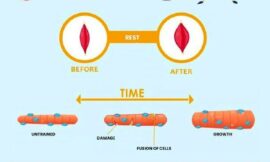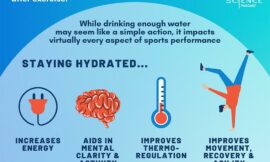In today’s fast-paced corporate world, desk jobs have become the norm for many, often tying us to our chairs for hours on end. While thes roles demand mental agility, the physical toll of prolonged sitting is a challenge too big to ignore. Staying active in an habitat designed for stillness might seem like a daunting task, but it’s far from impossible. This article explores practical and creative ways to infuse movement into your daily work routine,transforming your desk job from a sedentary pitstop into a platform for better health and vitality. Whether you’re navigating back-to-back meetings or deep in focus mode, these strategies will help you keep your body engaged and your energy flowing throughout the day.
Incorporating Movement Breaks into Your Daily Routine
Integrating small bursts of activity into your workday can dramatically shift how your body feels by the end of the afternoon.Rather than waiting for a full break, try setting your phone or computer to remind you to stand, stretch, or walk every 30 to 60 minutes. Even a brief 2- to 3-minute movement routine, such as seated leg lifts or shoulder rolls, activates your muscles and boosts circulation. These mini-breaks not only help reduce muscle stiffness but also increase focus and cognitive function, improving your productivity.
For a more structured approach, consider creating a simple movement checklist to rotate through activities. Here are some ideas:
- Desk stretches: neck tilts, wrist circles, and back extensions
- Quick walks: hallway laps or stair climbing
- Standing tasks: use a standing desk or take phone calls on your feet
- Balance exercises: stand on one foot to engage your core
For verified health benefits and additional strategies, refer to CDC’s Physical Activity Guidelines.
| Movement Break | Duration | Benefits |
|---|---|---|
| Desk stretches | 2-3 minutes | Relieves tension, improves posture |
| Quick walk | 5 minutes | Boosts blood flow, energizes mind |
| Standing calls | Varies | Reduces sitting time, strengthens legs |
For further reading on workplace ergonomics and movement, check out resources from the Occupational Safety and Health Administration (OSHA), known for promoting safer work environments.

optimizing Your Workspace for Better Posture and Mobility
Creating an ergonomic workspace is key to maintaining both posture and mobility during long hours at a desk. Start by adjusting your chair to ensure your feet rest flat on the floor and your knees are at a 90-degree angle. Your monitor should be at eye level to avoid strain on your neck. Incorporate a sit-stand desk or a desk converter to alternate between sitting and standing throughout the day, which stimulates blood flow and reduces stiffness. Small adjustments like a footrest or lumbar support cushion can significantly improve comfort and reduce lower back pain.
Beyond furniture, integrating movement-friendly tools and habits is essential. For example, using a wireless keyboard and mouse allows greater freedom of motion. Place frequently used items within easy reach to encourage natural twisting and bending instead of overreaching. consider setting reminders to perform simple stretches or mobility exercises every hour. Here is a quick reference guide to ideal ergonomic setup elements:
| Element | Position/height | Benefit |
|---|---|---|
| Monitor | Eye level, 20-30 inches away | Prevents neck strain |
| Chair | Feet flat, knees at 90° | Promotes proper spinal alignment |
| Desk | Elbows at 90° when typing | Reduces wrist strain |
| Accessories | Within arm’s reach | Encourages natural movement |
For more comprehensive guidelines on workspace ergonomics, explore resources available at OSHA Ergonomics and tips from the Mayo Clinic. These platforms provide evidence-based strategies to enhance your comfort and productivity while minimizing physical strain.

simple Exercises you Can Do at Your Desk
maximize your wellness without leaving your workspace by integrating quick, effective exercises into your daily routine. These movements not only alleviate stiffness but also boost circulation and mental clarity. Consider incorporating the following into your day:
- Seated leg lifts: Extend one leg at a time, hold for a few seconds, and repeat to engage your core and leg muscles.
- Shoulder rolls: Slowly rotate your shoulders forwards and backwards to release tension and improve posture.
- Desk push-ups: Use the edge of your desk for low-impact push-ups that strengthen your arms and chest.
- Neck stretches: Gently tilt your head side to side, holding each position to relax tight neck muscles.
To track your progress and stay motivated, here’s a simple routine you can customize to fit your schedule:
| Time of Day | Exercise | duration |
|---|---|---|
| Morning | Seated leg lifts + Neck stretches | 5 minutes |
| Midday | Desk push-ups + Shoulder rolls | 5 minutes |
| Afternoon | Repeat morning routine or take a short walk | 5–10 minutes |
for additional guidance on maintaining an active lifestyle while working, resources like the CDC workplace Health Promotion offer evidence-based tips and strategies. Staying consistent with small but purposeful movements can drastically improve your well-being without disrupting your workflow.

building a Sustainable Active Lifestyle Beyond the Office
Integrating movement into your daily routine doesn’t have to end when you leave your desk. Adopt habits that promote continuous activity by turning everyday tasks into opportunities for exercise. As an example, consider walking or cycling to work, taking stairs instead of elevators, or scheduling walking meetings with colleagues. These small adjustments not only enhance your physical well-being but also boost mental clarity and productivity.
To structure your efforts effectively, implement a weekly activity plan tailored to your preferences and schedule.Below is a simple table outlining examples of achievable goals and their benefits:
| Activity | Duration | Benefit |
|---|---|---|
| Brisk walk during lunch | 15-20 min | Improves cardiovascular health |
| Standing or walking breaks | 5 min every hour | Reduces stiffness and boosts circulation |
| Evening stretch routine | 10-15 min | Enhances adaptability and relaxation |
Consistency is key, so set reminders and track your progress to maintain this momentum. For expert advice on building sustainable fitness habits,consult resources such as the Centers for Disease Control and Prevention or the World health Institution’s physical activity guidelines. By weaving these strategies into your lifestyle, you create a lasting foundation for health beyond the confines of the office.
In Conclusion
Finding ways to move amidst the demands of a desk job doesn’t have to be a grand overhaul—it’s the little, consistent choices that add up. By weaving simple stretches, mindful breaks, and moments of movement into your daily routine, you can transform long hours at your desk into opportunities for vitality and health. Remember, staying active isn’t about perfection; it’s about progress, one step, stretch, or standing moment at a time. Your body—and your work—will thank you for it.





